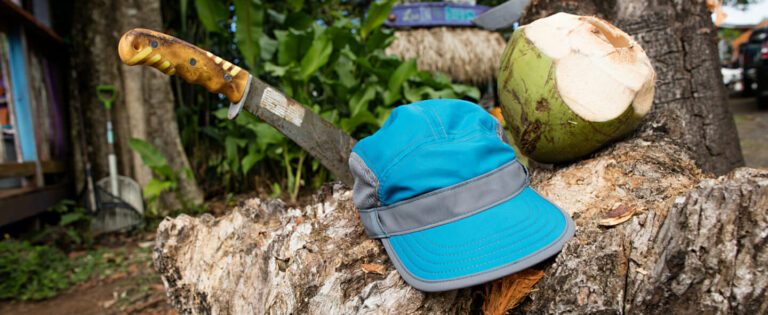The approach to your very climbing spot is often a rocky one, so it’s particularly important to have a solid pair of shoes. More specifically, you need some quality approach shoes! Wait, what are those? Well, approach shoes are multi-purpose shoes that have been designed to cope with the challenges of the approach to the crag or via ferrata (as well as your descent). But do we really need a different pair of shoes for every little thing? Can’t we just wear some sturdy walking boots? Let me think about that for a second…no! In the following, we’ll tell you everything you need to know about approach shoes, including what you need to consider before you buy and why every climber has one pair at the very least in his or her kit. So, keep on reading!
What are approach shoes anyway?
Approach shoes are usually a pair of sturdy low-cut shoes. They help you to cope with steeper grades of rock and terrain of varying difficulty. After all, most “paths” to your favourite spot are presumably not paved or well-maintained trails but full of debris, rock, grass and whatever else nature feels like throwing at us. For this kind of terrain, we need a real all-rounder! And, that’s precisely where approach shoes come in.
When walking boots and climbing shoes love each other very much, what you get is a pair of approach shoes. That’s basically how you could describe where approach shoes comes from. All joking aside, approach shoes are a hybrid between both types of shoes. They’re made to cope with any terrain. They provide the foot with support on both steep and more well-maintained paths. Not even short climbing sections are a problem for these shoes. They are designed to be comfortable and provide traction, giving you the surefootedness you need to make it to your favourite crag. If you’re in the market for such a shoe, here’s a brief overview of what you should keep in mind before buying.
An approach shoe’s most important characteristics![]()

If you’ve ever worn the wrong shoes, you know exactly where your feet end up at the end of the day: in the ice bucket. Since an approach can take even longer than the climb itself, it’s extremely important to find a comfortable approach shoe to get you to the crag. They should be secure and fit well and not feel constrictive or cause chafing. Even the baddest of climbers (I know that’s not the grammatically correct superlative) would rather have a solid pair of approach shoes than a bunch of yucky blisters on their feet.
Two of the more important contributing factors to a good fit are the footbed and the lacing. The higher-quality models have laces that extend all the way up to the toe of the shoe. Why? Well, this has the advantage that the shoe can be adjusted ever-so precisely to your individual foot. Another important factor is the lock down at the heel, which can be achieved by way of special heel inserts. These serve to keep the heel in its natural position whilst simultaneously absorbing shock.
Upper material, weight and lining – other important details
As with all outdoor shoes, an approach shoe’s upper is extremely important. Usually, manufacturers opt for a flexible synthetic material that is extremely tough and fit to withstand contact with rock and the like. There shouldn’t be any shortage of functionality and weather protection, either. Some weather protection will definitely not hurt. After all, your shoes are bound to get wet as you make your way to the crag. Plus, if your shoes are water resistant, you won’t have to struggle with putting your climbing shoes on with wet feet.
Functional materials like GORE-TEX provide excellent weather protection and keep the interior feeling fresh and comfortable. As you probably already know, GORE-TEX is breathable as well, so any moisture or sweat on the interior will pass through to the outside where it will evaporate. And your feet will stay nice and dry! But, more importantly, your feet won’t stink, either! That may sound trivial, but it’ll keep your climbing shoes from stinking as well.
In terms of weight, less is always more, as it so often is. Lighter approach shoes are much easier to stuff in your backpack or hang on your climbing harness when they’re not in use. There’s no reason to weigh yourself down!
The climbing zone and sole of the shoe![]()

In order for you to be able to cope with short climbing sections, you need a capable approach shoe, and that’s where the climbing zone comes in. This is a treadless or flat area at the front of the approach shoe for edging on more difficult terrain. Yet another advantage approach shoes have over ‘normal’ walking shoes.
Now, let’s move on to the most important part of an approach shoe: the sole! The approach to the crag is no walk in the park. You usually have to traverse rough, sloping terrain and/or walking paths and asphalt. In the best-case scenario, your shoe will have a sole capable of dealing with both harsh conditions as well as paved sections. A sole that offers the same grip on slick, wet and dry surfaces. The perfect combination of flexibility and stability.
Usually, approach shoes have a sole made primarily of natural rubber like a Vibram sole. The tread shouldn’t be too deep, as that would impede the grip on the rock, but not non-existent either. As for cushioning, approach shoes are hardly cushioned – if at all – in the front. When it comes to the sole’s stiffness, it’s completely up to you.
The most important features at a glance
If you’ve managed to make it this far or are just skimming because you’re strapped for time, here’s a summary of the most important features:
Quality approach shoes are tough all-purpose shoes for various terrain. A robust and flexible upper is just as important as sufficient weather protection and breathability. A secure lacing system that extends down to the the toe provides a snug fit. A low weight is essential because you don’t want to have to carry around extra weight on your feet or your harness. A climbing zone at the front is never a bad idea, and the sole should offer a good combination of flexibility and stability. In sum, regardless of which model you end up buying, the most important thing is that it fits both your foot and your needs!




